Potrebujeme váš súhlas na využitie jednotlivých dát, aby sa vám okrem iného mohli ukazovať informácie týkajúce sa vašich záujmov. Súhlas udelíte kliknutím na tlačidlo „OK“.
ASTM A400-69(2012)
Standard Practice for Steel Bars, Selection Guide, Composition, and Mechanical Properties
Automaticky preložený názov:
Štandardné praktiky pre oceľové tyče, návod pre výber, zloženie a mechanických vlastností
NORMA vydaná dňa 1.3.2012
Informácie o norme:
Označenie normy: ASTM A400-69(2012)
Poznámka: NEPLATNÁ
Dátum vydania normy: 1.3.2012
Kód tovaru: NS-2365
Počet strán: 8
Približná hmotnosť: 24 g (0.05 libier)
Krajina: Americká technická norma
Kategória: Technické normy ASTM
Kategórie - podobné normy:
Anotácia textu normy ASTM A400-69(2012) :
Keywords:
steel bars, Composition analysis--steel materials/applications, Mechanical properties, Selection guides--materials, Steel bars, ICS Number Code 77.140.60 (Steel bars and rods)
Doplňujúce informácie
| Significance and Use | |||||||||||||||||||||||||||||||||||||||||||||||||||||||||||||||||||||||||||||||||||||||||||||||||||||||||||||||||||||||||||||||||||||||||||||||||||||||||||||||||||||||||||||||||||||||||||||||||||||||||||||||||||||||||||||||||||||||||||||||||||||||||||||||||||||||||||||||||||||||||||||||||||||||||||||||||||||||||||||||||||||||||||||||||||||||||||||||||||||||||||||||||||||||||||||||||||||||||||||||||||||||||||||||||||||||||||||||||||||||||||||||||||||||||||||||||||||||||||||||||||||||||||||||||||||||||||||||||||||||||||||||||||||||||||||||||||||||||||||||||||||||||||||||||||||||||||||||||||||||||||||||||||||||||||||||||||||||||||||||||||||||||||||||||||||||||||||||||||||||||||||||||||||||||||||||||||||||||||||||||||||||||||||||||||||||||||||||||||||||||||||||||||||||||||||||||||||||||||||||||||||||||||||||||||||||||||||||||||||||||||||||||||||||||||||||||||||||||||||||||||||||||||||||||||||||||||||||||||||||||||||||||||||||||||||||||||||||||||||||||||||||||||||||||||||||||||||||||||||||
|
If the desired mechanical properties are as described in 4.1.1 for material identified as Classes P-1 through P-7, or in 4.1.2 for material identified as Classes Q-1 through Q-7, the strength level desired can be based on hardness or the equivalent tensile or yield strength as shown in Tables 1-4. If the desired mechanical properties are as set forth in 4.1.3 for material identified as Classes R-1 through R-6, the strength level is based on yield strength as shown in Tables 5 and 6. The user, after determining the mechanical property requirements of the critical section (that carrying the greatest stress) of the part, should select the composition or compositions from Tables 1-6 that fulfills these requirements and is most suitable for processing. |
|||||||||||||||||||||||||||||||||||||||||||||||||||||||||||||||||||||||||||||||||||||||||||||||||||||||||||||||||||||||||||||||||||||||||||||||||||||||||||||||||||||||||||||||||||||||||||||||||||||||||||||||||||||||||||||||||||||||||||||||||||||||||||||||||||||||||||||||||||||||||||||||||||||||||||||||||||||||||||||||||||||||||||||||||||||||||||||||||||||||||||||||||||||||||||||||||||||||||||||||||||||||||||||||||||||||||||||||||||||||||||||||||||||||||||||||||||||||||||||||||||||||||||||||||||||||||||||||||||||||||||||||||||||||||||||||||||||||||||||||||||||||||||||||||||||||||||||||||||||||||||||||||||||||||||||||||||||||||||||||||||||||||||||||||||||||||||||||||||||||||||||||||||||||||||||||||||||||||||||||||||||||||||||||||||||||||||||||||||||||||||||||||||||||||||||||||||||||||||||||||||||||||||||||||||||||||||||||||||||||||||||||||||||||||||||||||||||||||||||||||||||||||||||||||||||||||||||||||||||||||||||||||||||||||||||||||||||||||||||||||||||||||||||||||||||||||||||||||||||||
| 1. Scope | |||||||||||||||||||||||||||||||||||||||||||||||||||||||||||||||||||||||||||||||||||||||||||||||||||||||||||||||||||||||||||||||||||||||||||||||||||||||||||||||||||||||||||||||||||||||||||||||||||||||||||||||||||||||||||||||||||||||||||||||||||||||||||||||||||||||||||||||||||||||||||||||||||||||||||||||||||||||||||||||||||||||||||||||||||||||||||||||||||||||||||||||||||||||||||||||||||||||||||||||||||||||||||||||||||||||||||||||||||||||||||||||||||||||||||||||||||||||||||||||||||||||||||||||||||||||||||||||||||||||||||||||||||||||||||||||||||||||||||||||||||||||||||||||||||||||||||||||||||||||||||||||||||||||||||||||||||||||||||||||||||||||||||||||||||||||||||||||||||||||||||||||||||||||||||||||||||||||||||||||||||||||||||||||||||||||||||||||||||||||||||||||||||||||||||||||||||||||||||||||||||||||||||||||||||||||||||||||||||||||||||||||||||||||||||||||||||||||||||||||||||||||||||||||||||||||||||||||||||||||||||||||||||||||||||||||||||||||||||||||||||||||||||||||||||||||||||||||||||||||
|
1.1 This practice covers the selection of steel bars according to section and to the mechanical properties desired in the part to be produced. This is not a specification for the procurement of steel. Applicable procurement specifications are listed in Section 5. 1.2 Several steel compositions intended for various sections and mechanical property requirements are presented in Tables 1-6. The criteria for placing a steel composition in one of the three general class designations, Classes P, Q, and R (described in Section 4) are as follows: 1.2.1 Classes P and Q should be capable of developing the mechanical properties shown in Tables 1-4 by liquid quenching from a suitable austenitizing temperature, and tempering at 800°F (427°C) or higher. A hardness indicated by tests made at a location shown in Fig. 1, A, B, or C, is taken as evidence that a composition is capable of meeting other equivalent mechanical properties shown in the tables. Normal good shop practices are assumed, with control of austenitizing and tempering temperatures, and mild agitation of the part in the quenching bath. 1.2.2 Class R should be capable of developing the mechanical properties shown in Tables 5 and 6 as hot rolled, by cold drawing, or by cold drawing with additional thermal treatment. The locations for obtaining tension tests are described in 6.2. 1.3 It is not implied that the compositions listed in the tables are the only ones satisfactory for a certain class and mechanical property requirement. Steels with lower alloy contents are often satisfactory through the use of special processing techniques. 1.4 The values stated in inch-pound units are to be regarded as standard. The values given in parentheses are mathematical conversions to SI units that are provided for information only and are not considered standard. TABLE 1 Steels for Moderately Quenched
PartsClasses P-1 Through P-7 Note 1—Steels listed as approved for a certain section or strength may be used for lighter sections and lower strengths. Note 2—Steel composition numbers correspond to SAE, AISI, or ASTM designations. Those in italics are no longer considered standard grades due to decreased usage. Note 3—An H-steel with the same grade designation as a standard SAE-AISI steel is capable of meeting the same section and strength requirements as the standard steel (see Specification A304), and is the preferred method of specification. Note 4—Steels having a maximum carbon content of 0.40 % or over, or a hardness of HB 293 or over after heat-treating, are not recommended for applications involving welding.
A 1 psi = 0.006895 MPa. B Minimum as-quenched hardness for obtaining desired hardness after tempering at 800°F (427°C) or higher. C 1 in. = 25.4 mm. TABLE 2 Steels for Drastically Quenched
PartsClasses P-1 Through P-7 Note 1—Steels listed as approved for heavier sections or higher strengths may be used in the same conditions for lighter sections and lower strengths. Note 2—Steel composition numbers correspond to ASE, AISI, or ASTM designations. Those in italics are no longer considered standard grades due to decreased usage. Note 3—An H-steel with the same grade designation as a standard SAE-AISI steel is capable of meeting the same section and strength requirements as the standard steel (see Specification A304), and is the preferred method of specification. Note 4—Steels having a maximum carbon content of 0.40 % or over, or a hardness of HB 293 or over after heat-treating, are not recommended for applications involving welding. Note 5—Parts made of steel with a carbon content of 0.33 % or higher, where the section is under 1 1/2 in. (38.1 mm) should not be quenched in water without careful exploration for quench-cracking.
A 1 psi = 0.006895 MPa. B Minimum as-quenched hardness for obtaining desired hardness after tempering at 800°F (427°C) or higher. C 1 in. = 25.4 mm. D These steels have insufficient hardenability for Class P-4, because of difference in test locations, but are satisfactory for other smaller sizes. TABLE 3 Steels for Moderately Quenched
PartsClasses Q-1 Through Q-7 Note 1—Steels listed as approved for heavier sections or higher strengths may be used in the same conditions for lighter sections and lower strengths. Note 2—Steel composition numbers correspond to ASE, AISI, or ASTM designations. Those in italics are no longer considered standard grades due to decreased usage. Note 3—An H-steel with the same grade designation as a standard SAE-AISI steel is capable of meeting the same section and strength requirements as the standard steel (see Specification A304), and is the preferred method of specification. Note 4—Steels having a maximum carbon content of 0.40 % or over, or a hardness of HB 293 or over after heat-treating, are not recommended for applications involving welding.
A 1 psi = 0.006895 MPa. B Minimum as-quenched hardness for obtaining desired hardness after tempering at 800°F (427°C) or higher. C 1 in. = 25.4 mm. TABLE 4 Steels for Drastically Quenched
PartsClasses Q-1 Through Q-7 Note 1—Steels listed as approved for heavier sections or higher strengths may be used in the same conditions for lighter sections and lower strengths. Note 2—Steel composition numbers correspond to SAE, AISI, or ASTM designations. Those in italics are no longer considered standard grades due to decreased usage. Note 3—An H-steel with the same grade designation as a standard SAE-AISI steel is capable of meeting the same section and strength requirements as the standard steel (see Specification A304), and is the preferred method of specification. Note 4—Steels having a maximum carbon content of 0.40 % or over, or a hardness of HB 293 or over after heat-treating, are not recommended for applications involving welding. Note 5—Parts made of steel with a carbon content of 0.33 % or higher, where the section is under 1½ in. (38.1 mm) should not be quenched in water without careful exploration for quench-cracking.
A 1 psi = 0.006895 MPa. B Minimum as-quenched hardness for obtaining desired hardness after tempering at 800°F (427°C) or higher. C 1 in. = 25.4 mm. D These steels have insufficient hardenability for Class Q-4 parts because of different location of test specimens, but are satisfactory for smaller sections. E For these steels, the yield to tensile-strength ratio will usually be lower than 80 %. TABLE 5 Steels for Parts Manufactured From Hot RolledA and Cold DrawnB,C BarsClasses R-1 Through R-6 Note 1—Steels listed as approved for heavier section or higher strengths may be used in the same conditions for lighter sections and lower strengths. Note 2—Steel composition numbers correspond to ASE, AISI, or ASTM designations. Those in italics are no longer considered standard grades due to decreased usage. Hot-rolled 1000 series steels with a maximum carbon content of 0.40 % only are approved for welding. Only cold-drawn 1000 series steels used in the strength level and section thickness for which hot-rolled steels of the same composition are approved may be welded, and in this case caution should be exercised to see that excessive grain growth does not occur in the heat-affected zone.
A Hot-rolled bars are indicated in table by prefix “HR.” B Cold-drawn bars are indicated in table by prefix “CD.” These bars are produced by normal practice in cold-drawing and with no stress relief. Bars cold-finished by turning, grinding, turning and polishing, etc., are not covered under cold-drawn bars, as such cold-finished bars have the properties of hot-rolled bars. C Classification of cold-drawn steels by size and yield-strength level in this table is based on yield-strength determinations at 0.2 % offset, or as determined by 0.005 in./in. elongation under load for yield strengths up to 90 000 psi, incl, and by 0.006 in./in. elongation under load for yield strengths above 90 000 psi. D 1 psi = 0.006895 MPa. E 1 in. = 25.4 mm. TABLE 6 Steels for Parts Produced From Cold-Drawn and Cold-Drawn Stress-Relieved BarsClasses R-1 Through R-6A,B Note 1—Steels listed as approved for heavier section or higher strengths may be used in the same conditions for lighter sections and lower strengths. Note 2—Steel composition numbers correspond to ASE, AISI, or ASTM designations. Those in italics are no longer considered standard grades due to decreased usage. Note 3—Steels in conditions listed in this table are not approved for applications involving welding.
A Conditions and treatments of bars are indicated in this table by the symbols shown below. Bars cold-finished by turning, grinding, turning and polishing, etc., are not covered, as such bars have the properties of hot-rolled bars. “CD” = Bars produced by normal practice in cold-drawing, and with no stress relief. “CDT” = Cold-drawn bars with subsequent thermal treatment. Heavier than normal drafts may be required. B Classification of cold-drawn steels by size and yield-strength level in this table is based on yield-strength determinations at 0.2 % offset or as determined by 0.005 in./in. elongation under load for yield strengths up to 90 000 psi, and by 0.006 in./in. elongation under load for yield strengths above 90 000 psi. C 1 psi = 0.006895 MPa. D 1 in. = 25.4 mm. TABLE 7 Applicable Classes for Critical Section Size
A 1 in. = 25.4 mm.
|
|||||||||||||||||||||||||||||||||||||||||||||||||||||||||||||||||||||||||||||||||||||||||||||||||||||||||||||||||||||||||||||||||||||||||||||||||||||||||||||||||||||||||||||||||||||||||||||||||||||||||||||||||||||||||||||||||||||||||||||||||||||||||||||||||||||||||||||||||||||||||||||||||||||||||||||||||||||||||||||||||||||||||||||||||||||||||||||||||||||||||||||||||||||||||||||||||||||||||||||||||||||||||||||||||||||||||||||||||||||||||||||||||||||||||||||||||||||||||||||||||||||||||||||||||||||||||||||||||||||||||||||||||||||||||||||||||||||||||||||||||||||||||||||||||||||||||||||||||||||||||||||||||||||||||||||||||||||||||||||||||||||||||||||||||||||||||||||||||||||||||||||||||||||||||||||||||||||||||||||||||||||||||||||||||||||||||||||||||||||||||||||||||||||||||||||||||||||||||||||||||||||||||||||||||||||||||||||||||||||||||||||||||||||||||||||||||||||||||||||||||||||||||||||||||||||||||||||||||||||||||||||||||||||||||||||||||||||||||||||||||||||||||||||||||||||||||||||||||||||||
| 2. Referenced Documents | |||||||||||||||||||||||||||||||||||||||||||||||||||||||||||||||||||||||||||||||||||||||||||||||||||||||||||||||||||||||||||||||||||||||||||||||||||||||||||||||||||||||||||||||||||||||||||||||||||||||||||||||||||||||||||||||||||||||||||||||||||||||||||||||||||||||||||||||||||||||||||||||||||||||||||||||||||||||||||||||||||||||||||||||||||||||||||||||||||||||||||||||||||||||||||||||||||||||||||||||||||||||||||||||||||||||||||||||||||||||||||||||||||||||||||||||||||||||||||||||||||||||||||||||||||||||||||||||||||||||||||||||||||||||||||||||||||||||||||||||||||||||||||||||||||||||||||||||||||||||||||||||||||||||||||||||||||||||||||||||||||||||||||||||||||||||||||||||||||||||||||||||||||||||||||||||||||||||||||||||||||||||||||||||||||||||||||||||||||||||||||||||||||||||||||||||||||||||||||||||||||||||||||||||||||||||||||||||||||||||||||||||||||||||||||||||||||||||||||||||||||||||||||||||||||||||||||||||||||||||||||||||||||||||||||||||||||||||||||||||||||||||||||||||||||||||||||||||||||||||
|
|||||||||||||||||||||||||||||||||||||||||||||||||||||||||||||||||||||||||||||||||||||||||||||||||||||||||||||||||||||||||||||||||||||||||||||||||||||||||||||||||||||||||||||||||||||||||||||||||||||||||||||||||||||||||||||||||||||||||||||||||||||||||||||||||||||||||||||||||||||||||||||||||||||||||||||||||||||||||||||||||||||||||||||||||||||||||||||||||||||||||||||||||||||||||||||||||||||||||||||||||||||||||||||||||||||||||||||||||||||||||||||||||||||||||||||||||||||||||||||||||||||||||||||||||||||||||||||||||||||||||||||||||||||||||||||||||||||||||||||||||||||||||||||||||||||||||||||||||||||||||||||||||||||||||||||||||||||||||||||||||||||||||||||||||||||||||||||||||||||||||||||||||||||||||||||||||||||||||||||||||||||||||||||||||||||||||||||||||||||||||||||||||||||||||||||||||||||||||||||||||||||||||||||||||||||||||||||||||||||||||||||||||||||||||||||||||||||||||||||||||||||||||||||||||||||||||||||||||||||||||||||||||||||||||||||||||||||||||||||||||||||||||||||||||||||||||||||||||||||||
Podobné normy:
Historická
1.3.2012
Historická
1.3.2012
Historická
1.5.2014
Historická
1.5.2012
Historická
1.7.2011
Historická
1.4.2010
Odporúčame:
Aktualizácia zákonov
Chcete mať istotu o platnosti využívaných predpisov?
Ponúkame Vám riešenie, aby ste mohli používať stále platné (aktuálne) legislatívne predpisy
Chcete vedieť viac informácií ? Pozrite sa na túto stránku.


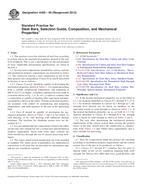
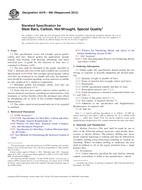 ASTM A576-90b(2012)..
ASTM A576-90b(2012)..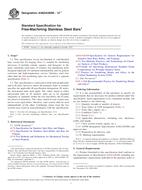 ASTM A582/A582M-12e1..
ASTM A582/A582M-12e1..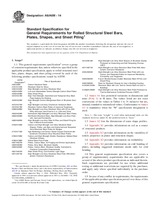 ASTM A6/A6M-14
ASTM A6/A6M-14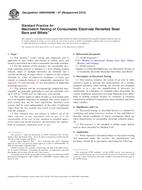 ASTM A604/A604M-07(2..
ASTM A604/A604M-07(2..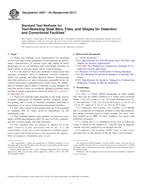 ASTM A627-03(2011)..
ASTM A627-03(2011)..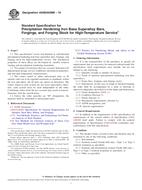 ASTM A638/A638M-10..
ASTM A638/A638M-10..
 Cookies
Cookies
